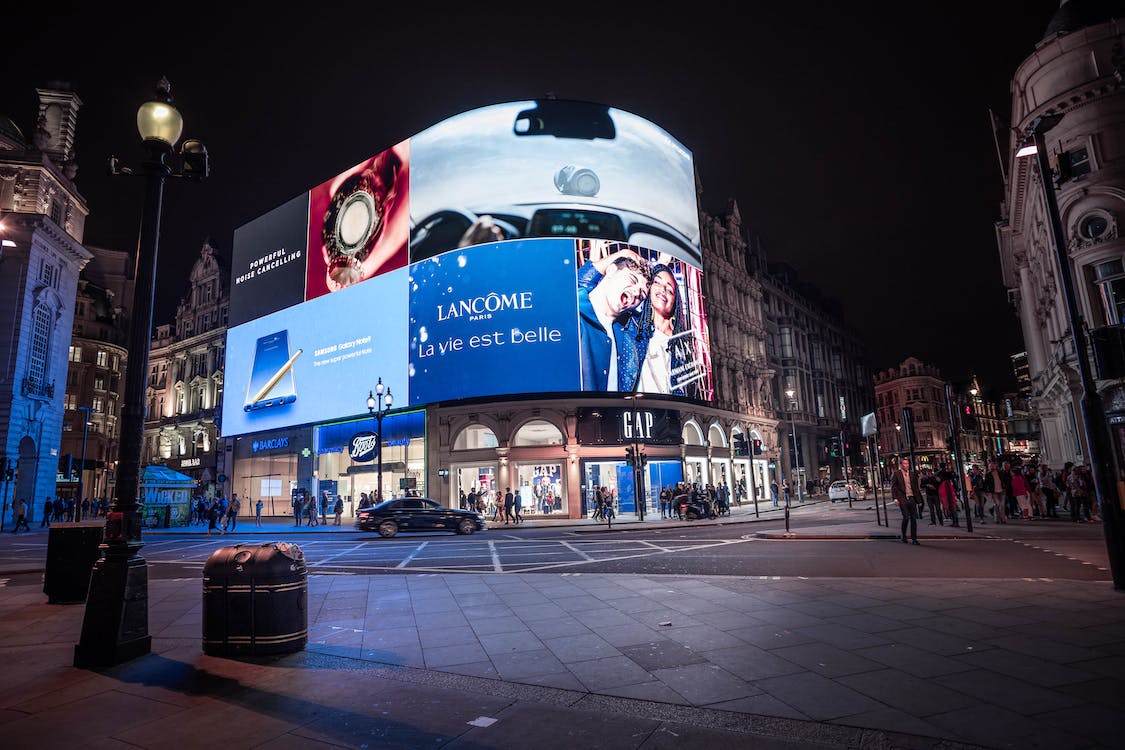Digital out-of-home (DOOH) is advertising that is displayed on digital screens in various public locations. Unlike traditional out-of-home advertising, which typically consists of static billboards or signs, DOOH utilizes digital technology to deliver dynamic and targeted messaging to consumers. There is a wide array of formats currently in the DOOH space.
The different digital formats include:
Billboards – These are large digital screens typically placed in high-traffic areas such as highways, city centers, or shopping districts. They display rotating advertisements, often with eye-catching visuals and animations.
Posters – Similar to traditional posters, digital posters are electronic displays that show static or dynamic content. They are mostly commonly found in areas like shopping malls.
Transit Advertising – This format includes digital screens installed inside buses, taxis, train stations, subway stations, and airports. Placements can also be included at electric vehicle charging and gas stations.
Street Furniture – Digital screens integrated into street furniture, such as bus shelters, kiosks, benches, or information panels. These displays can provide real-time information, news updates, and advertising content.
Video Walls – Video walls consist of multiple digital screens tiled together to create a larger display. They are often seen in places with high foot traffic, like shopping malls, stadiums, airports, and conference centers.
Retail Networks – These include smaller digital screens in grocery stores, convenience stores, pharmacies, gyms, salons, office buildings, and doctor’s offices.
There are numerous advantages of DOOH that can enable a business to scale. DOOH offers advanced targeting and increased reach, generating greater brand awareness and consideration to larger audiences. The dynamic nature of DOOH allows advertisers the flexibility to create dynamic content, making for a more memorable experience than more traditional forms of advertising. The dynamic nature of DOOH also allows for multivariant creative testing and in-flight creative refreshes. DOOH can be seamlessly integrated with current digital marketing strategies, synchronizing campaigns with other online initiatives, such as social media, CTV, or full funnel display campaigns. This integration provides a cohesive brand experience across different channels, reinforcing brand messaging, driving customer engagement, and ultimately conversion.
DOOH offers a variety of targeting tactics that can be executed concurrently. Formats are chosen based on geographic location and audience demographics. Contextual targeting allows for the ads to be displayed based on the surrounding environment. Data integration can also be implemented allowing the campaign to leverage data from mobile devices, local weather conditions, or other third-party data providers. By combining various targeting tactics DOOH allows brands to further refine their audience targeting and messaging.
The success of a DOOH campaign can be measured in a number of ways. Impressions are typically measured based on the number of people who pass by or are in the vicinity of the digital screen. Dwell time captures the length of time individuals spend in proximity to a DOOH display. Engagement can be measured based on interactions with the digital screen, a QR code scan, vanity URL visit, or via a touchscreen. Integration with other digital channels like remarketing allows user behavior across multiple digital touchpoints to be captured. Brands can measure the impact of DOOH on subsequent digital interactions, such as website visits or conversions. Mobile devices can also be used to measure footfall traffic in retail locations highlighting the impact of DOOH on in store visits.
DOOH offers brands an opportunity to scale as it provides a way to reach a large and qualified audience in high-traffic locations, increasing brand exposure, awareness, and conversion. It also allows advertisers an opportunity to engage and capture audience attention through dynamic and memorable content. DOOH provides advertisers with a unique opportunity to optimize their messaging, targeting, and creative strategies, leading to more effective campaigns and a better return on investment.

